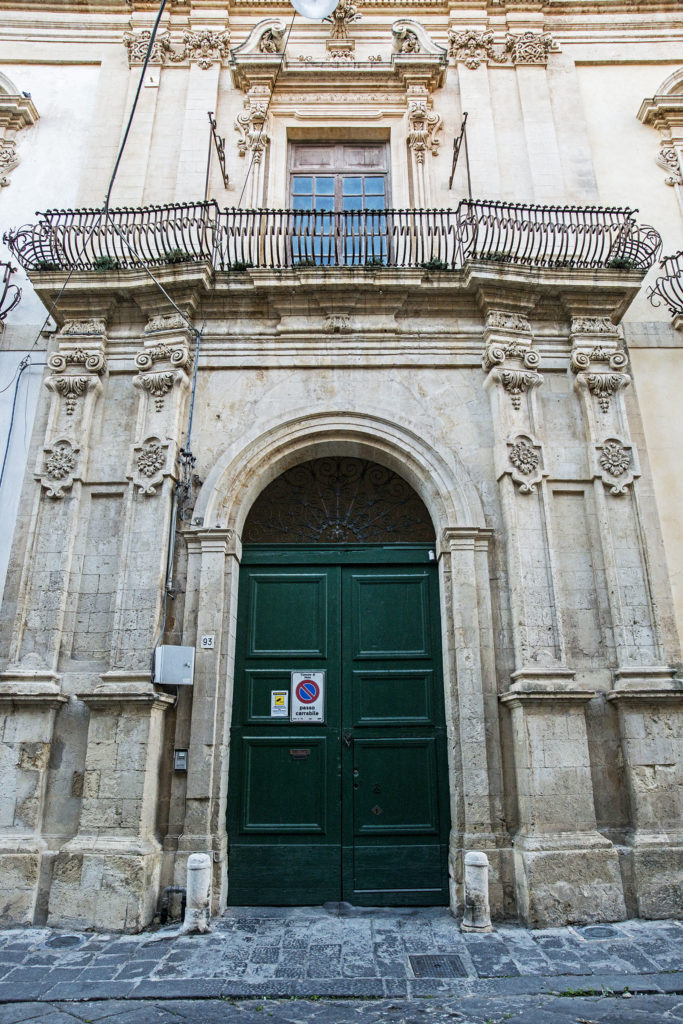The Palazzo
Trigona
di Canicarao is one of the most interesting examples of Baroque building constructed after the earthquake of 1693. It takes its name from the family of the owners who had already been living in the city since the 12th century.
The palace occupies half a block between Via Cavour, which houses the main façade with the entrance, Via Giovanni XXIII, now Via Bancheri, and Via Giberti where the lateral asymmetrical terraced units extend. The centre is occupied by the courtyard with the
exedra
and the staircase and on the other side, completing the block, is the archbishop’s palace.
This is one of the most prestigious lots of land in Noto, located next to the Mother Church, the cathedral from 1844, and other noble palaces.
It was built between about 1750 and 1760, then enlarged by the Marquis Bernardo Trigona in 1777, and completed by his son Vincenzo in 1791.
The monumental façade on Via Cavour is the result of the union of pre-existing buildings stylistically unified into a single façade divided into two sections, with four windows on the ground floor and four balconies on the first floor.
Here the French windows are decorated at the top with a floral frieze, surmounted by a jutting cornice and crowned by curved or triangular tympanums. The balconies are supported by highly decorated stone
cagnoli
that are configured to continue the stone cornices of the windows.
